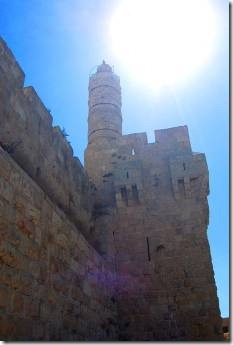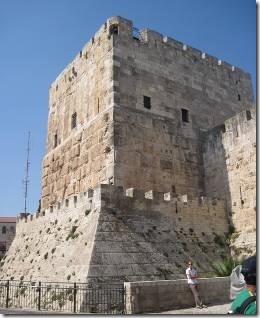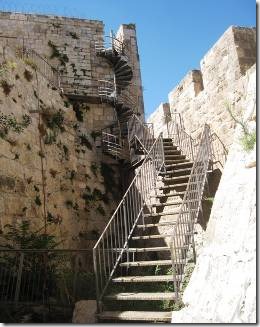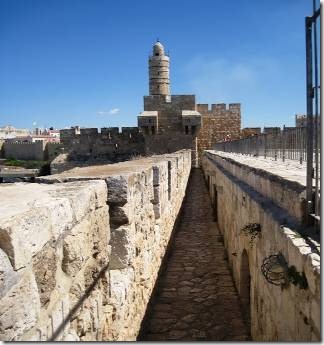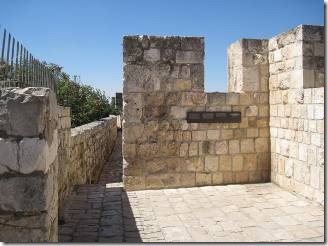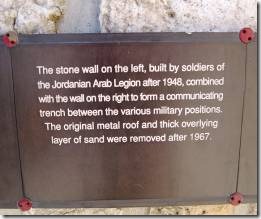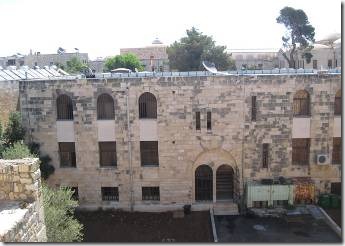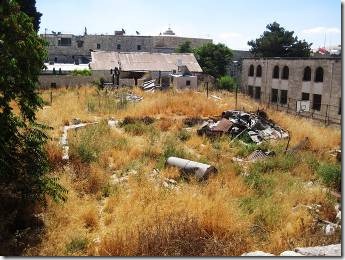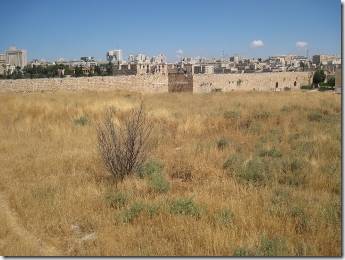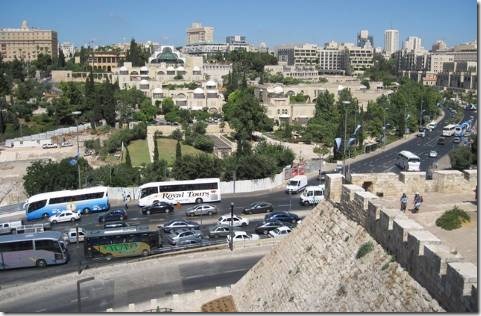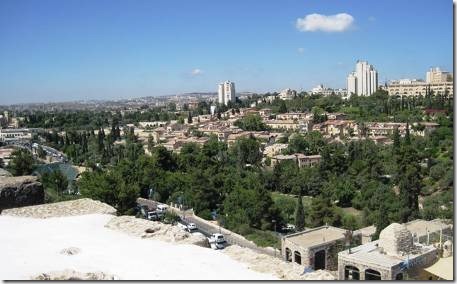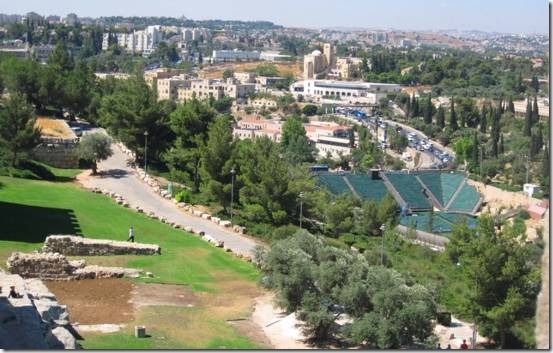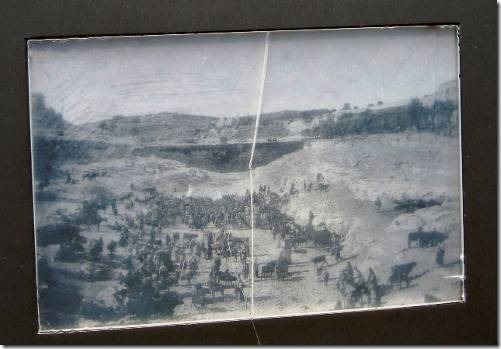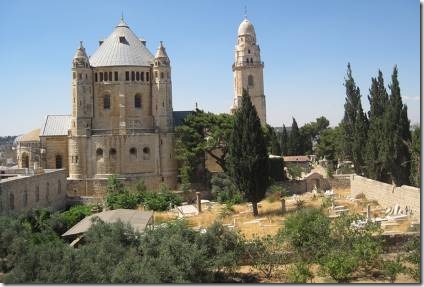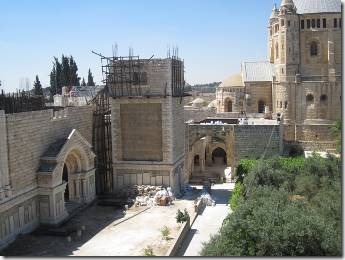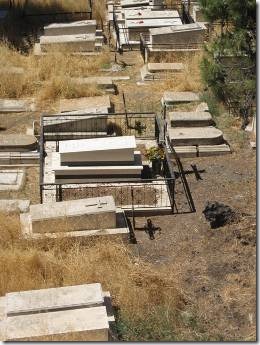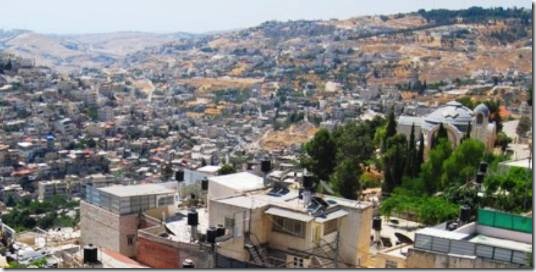Shalom,
Randal and I did a "formal" one day tour of the Old City, and I did read the biography of Jerusalem by Montefiore, but mostly we have just wandered around and looked and, after the fact, I’ve done some research. We don’t own a tour guide of Israel, though Charmaine and Linda had one which we used while they were here. I, for one, didn’t come to Israel with lots of questions. I did read several of Bruce Feiler’s books so that gave me some background. Wandering around the Jewish Quarter this last visit I did buy a book about Jerusalem. It was published by the same Italian company that published the book we’d bought in Ephesus when we were in Turkey. If I were you coming to Jerusalem for the first time, I would read ahead as much as you could and look at lots and lots of pictures. I think it would be easy to spend at least a month in Jerusalem alone if you really wanted to explore the different areas, old and new and not have to make a mad rush of it. If your focus is the Old City, stay in the Old City. Stay in the different neighborhoods that you want to visit. Anyway, that would be how I would do it if we were just coming to see Israel and not traveling on a boat around the world.
Ru
Ramparts Walk South: The Armenian and Jewish Quarters by myself…
The Citadel and Tower of David
“Situated next to the Jaffa Gate, the Citadel encompasses an area where once stood three towers built by King Herod: the Phaseal Tower (named for his brother,) the Hippicus Tower (named for his friend,) and the Miriamne Tower (named for his wife.) They were there to guard Herod’s adjacent palace and were later spared destruction by Titus’ Roman army in order to house his Twelfth Legion. During the Byzantine era it was in such a state of ruin that philosophers and recluses chose it as a place of meditation. It was used as a fortress headquarters in the 12th century by the Crusaders, who repaired its walls and surrounded it by a moat. The Muslim Mamluks demolished it in 1239 and it remained in a state of abandon until 1335 when the Turks repaired the walls and added the minaret known today as the Tower of David. The Citadel became a British base during the Mandate (1917-1948) and then a Jordanian one until 1967. Today it houses the Museum of the History of Jerusalem and is famous for the sound and light shows presented on its walls.” Jerusalem
“As you continue along the wall, you pass above the Armenian Quarter. The Armenian quarter is home to about 2500 Armenians. A walled compound encompasses the mostly residential area, as well as the St James Church, the Mardigian Museum, the Gulbenkian Library, the convent of the olive tree, and the residency of the Armenian Patriarch.
The back of the Armenian Library in the Armenian Quarter (I think.)
“There is also an empty lot, which is valuable real estate and archaeologically, but the Armenians will not allow excavations in the area.”
I walked along looking inside towards the Armenian Quarter, but there really wasn’t so much to see close to the walls.
More land left undeveloped by the Armenians who make the decisions for their quarter.
Outside there was always something to see even if, at the time, I didn’t really know what I was looking at. It was just being able to look down that was amazing. Not far from the Jaffa Gate is the Mamilla area.
“Outside of the old city is the new Mamilla neighborhood; Mamilla used to be on the Jordanian border and was a poor residential area. Following Mamilla, are the neighborhoods of Yemin Moshe and Mishkenot Sheananim. The relative “skyscrapers” which you can see from the ramparts are the King David Hotel, the Sheraton Hotel, and the YMCA building.”
“This area extends just outside of the Old City west of the Jaffa Gate. Built in the 19th century as the financial center of the Arabs and Jews, between 1948 and 1967 Mamilla fell into decline. It was later the subject of an impressive urban renewal project and, today, is a luxury residential and business district.
Jerusalem
The high rises are few and far between so Jerusalem, to me, has a “human” scale.”
Within this area is “the Sultan’s Pool,” once a reservoir, now a stadium.
Sultan’s Pool (the outdoor stadium.)
Jerusalem’s Secret Revealed: How They Filled The Sultan’s Pool
Archaeologists have uncovered the secret to how ancient engineers filled the Sultan’s Pool with water in the Old City of Jerusalem.
By Hana Levi Julian
First Publish: 6/16/2009, 1:29 PM
http://www.israelnationalnews.com/News/News.aspx/131901
“During an excavation prior to the construction of the Montefiore Museum in Mishkenot Sha’ananim by the Jerusalem Foundation, archaeologists uncovered the main aqueduct that conveyed water to the pool.
The aqueduct supplied pilgrims and residents with water for drinking and purification, at the Temple Mount as well as the Sultan’s Pool.
Although today most Israelis think of the Sultan’s Pool as a venue for outdoor concerts and other large cultural events, for hundreds of years it was one of the city’s most important reservoirs.
The dig, led by Gideon Solimany and Dr. Ron Be’eri (of IAA), focused on a section along the course of the Low-Level Aqueduct on the western side of the Ben Hinnoam Valley, above the Derech Hevron Bridge. The aqueduct originally reached a height of three meters.
"Naturally, one of the first things Sultan Suleiman The First hastened to do in Jerusalem (along with the construction of the city wall as we know it today) was to repair the aqueduct that was already there which supplied the large numbers of pilgrims who arrived in Jerusalem with water for drinking and purification," explained Be’eri.
"Suleiman attached a small tower to the aqueduct, inside of which a ceramic pipe was inserted. The pipe diverted the aqueduct’s water to the Sultan’s Pool and the impressive sabil (a Muslim public fountain for drinking water), which he built for the pilgrims who crossed the Derekh Hebron bridge and is still preserved there today.”
Beeri added that the location of the aqueduct was extremely successful and efficient. "We found four phases of different aqueducts that were constructed in exactly the same spot, one, Byzantine, from the sixth-seventh centuries CE and three that are Ottoman which were built beginning in the sixteenth century CE. The last three encircle a large subterranean water reservoir that was apparently built before the Ottoman period”.
The Low-level Aqueduct is one of two ancient water conduits that originated at the springs in the Hebron Highlands and at Solomon’s Pools, and terminated in Jerusalem and the Temple Mount.
Research has shown that the ancient aqueduct was meant to supply high quality spring water to the Temple Mount, to Jerusalem’s residents and to the many pilgrims that have come to the city over the course of generations, according to a statement by IAA.
“We can see that from the time of the Second Temple until the Byzantine period water flowed in an open channel that was covered with stone slabs. In later phases, beginning in the Ottoman period, water was conveyed in ceramic pipes which were installed inside the aqueduct,” Be’eri noted.
The Low-level Aqueduct is to be incorporated in the Montefiore Museum, which the Jerusalem Foundation plans to build inside the pool, adjacent to the aqueduct.”
An illustration of Sultan’s Pool as a reservoir.
The Dormition Abbey (outside the Old City walls on Mount Zion)
“This massive structure that rises on Mount Zion resembles a mighty fortress: it is topped by a high, domed bell tower, a conical dome, and corner towers. The church, built over the site where the Virgin is said to have fallen asleep for the last time, is the last in a series of buildings erected over the centuries. It was completed by Kaiser Wilhelm II during the first decade of the 20th century based on plans by Heinrich Renard, based on the model of the Carolingian cathedral of Aix-la-Chapelle. The church belongs to the Benedictines. The highlights are the mosaic and the wood-and-ivory statue of the Sleeping Virgin in the crypt.” Jerusalem
Renovations/repair were underway.
There was an Armenian Cemetery on one side of the Abbey and a Greek Cemetery on the other.
The Church of St. Peter in Gallicantu: (the gray domed topped building on the right surrounded with greenery.)
“The name of the church recalls the episode in which Peter denied Jesus three times before “the cock crowed.” This church was consecrated in 1931 and belongs to the Catholic Assumptionists, and was built over the remains of an older Byzantine basilica. It has been said, but never officially confirmed, that it stands over the house of the High Priest Caiaphas.
The church crypt has a series of grottoes, one of which has been called Jesus’ prison. It is said that after having been questioned by Caiaphas that he spent the night here before being taken before Pontius Pilate.” Jerusalem
At this point, I am still on the walls looking over to Mount Olive and Its amazing view. But this email is already too long so I’ll save the end of the walk when I reach the Jewish Quarter and include it with some of the things I saw wandering around inside.


